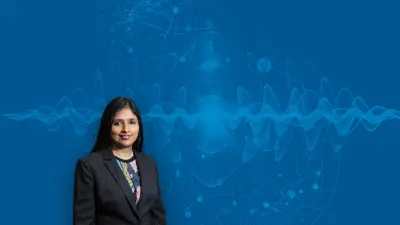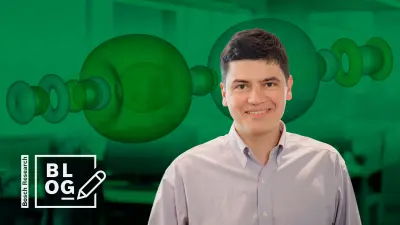From quantum physics to technology “Invented for life”
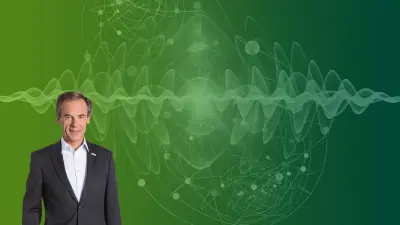
2021-02-12
Quantum technology is pushing the boundaries of what is possible — in the domains of computing as well as sensors. The result could be a European success story. Above all, the aim is to enhance the broad practical benefit of quantum effects — for everything from the development of CO2-neutral powertrains to neurological diagnostics. It is on applications such as these that Bosch researchers are working.
by Dr. Volkmar Denner
For Einstein, quantum physics was a headache. In the future, quantum technology will help diagnose Alzheimer’s, epilepsy, and Parkinson’s. This nicely illustrates the stage research and development have reached some 100 years after the first studies on the seemingly absurd effects of waves and particles — effects that, although still difficult for us to grasp, can be put to good use.
Now companies like Bosch can use them to their technological advantage, and even as the basis of technology “Invented for life.” For example, brain diseases can not only be pinpointed precisely, but also more simply and, above all, far less expensively than before. Most of the pioneering progress in quantum physics was made in Europe, and we have to do all we can to ensure that quantum technology is not just an American and Asian success story, but a European one as well.
It started with a cat that was both dead and alive
Quantum physics all started with insights into the paradoxical behavior of subatomic particles — paradoxical in terms of classical Newtonian mechanics. For example, particles such as electrons can undergo a change of state when a measurement is taken. Terms such as uncertainty principle and quantum superposition have been used to describe this, and the physicist Erwin Schrödinger devised his famous paradox to compare it with a hypothetical cat that can be simultaneously alive and dead.
It is above all superposition that quantum computing makes use of. That means that these computers no longer operate with bits that are either zero or one, but with qubits that can take on any superposition of zero and one. This makes them capable of outperforming any supercomputer in certain tasks.
One application that is interesting for Bosch is the simulation of new materials, right down to their atomic structure — something that even today’s supercomputers cannot do.
Quantum computers as the key to CO₂-neutral powertrains
For the time being, however, quantum computers are several years away from commercial applications. Nonetheless, if it wants to play a leading technological role in the decades to come, European industry should set up its own hardware platform for quantum computing. And above all, it has to move early to develop applications. One such application that is interesting for Bosch is the simulation of new materials, right down to their atomic structure — something that even today’s supercomputers cannot do. The result could include new catalyst materials that significantly reduce the need for precious metals in fuel-cell systems. This would be a huge leap forward for the development of CO2-neutral powertrains — a quantum leap, as many would say, were it not for the fact that quanta are the tiniest of leaps known to physics.
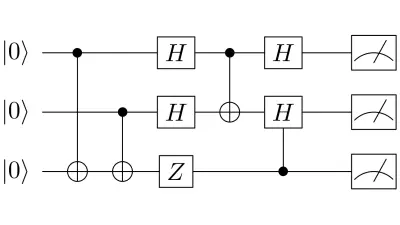
Diamond flaws could diagnose Parkinson’s

Great though the disruptive potential of quantum computers may be, quantum technology can do much more. For example, quantum sensor technology can help push the boundaries of medical diagnosis. This is also a subject of Bosch research. Like so much in this field of physics, the effect on which it is based is an astonishing one: diamond flaws. They are the basis for measurements of unprecedented accuracy. A flawless diamond consists of nothing but carbon. Flaws, however, are the result of a nitrogen atom and an adjacent missing carbon atom. And precisely these “nitrogen-vacancy centers” are highly sensitive to the tiniest changes in magnetic fields — such as the changes that occur in neurological disorders. They also allow the development of quantum sensors that could take the diagnosis of Alzheimer’s, epilepsy, and Parkinson’s to a new level over the next few years — making it more accurate, simpler, and, not least, more affordable than ever.
A revolution in neurological diagnostics
More specifically, when treating such disorders, the aim is to localize the affected brain regions as exactly as possible. Up to now, this has only been possible with superconducting magnetometers, which have to be cooled to minus 269 degrees Celsius with liquid helium. The scanners that use them are correspondingly complex — huge yet cramped for patients, extremely expensive, and thus rarely found in hospitals. The quantum sensors of the future, by contrast, also work at room temperature, and require no cooling, which means they can be fitted to a light helmet, say. The apparatus currently set up in the Bosch laboratories is still bigger than a laptop, but this will eventually become a circuit board and perhaps, in the course of miniaturization, a chip that costs no more than a few euros. A revolution in neurological diagnosis is on the horizon.

100 times more precise than micromechanical sensors
Making the internet of things quantum-safe
Quantum technology will be capable of even more. For example, we will also see yaw-rate sensors based on the principle of nuclear magnetic resonance. They will be a full 100 times more precise than micromechanical sensors, and play an important role in making highly automated driving safe. And we will also see quantum encryption. It will be based on physical effects that exclude any eavesdropping. One way of generating the keys is by using random numbers that arise from the reflection or transmission of light particles in a semi-transparent mirror. Here as well, the aim is to integrate them on a chip to make data traffic on the internet of things quantum-safe. It is in applications such as these that Europe can take the lead.
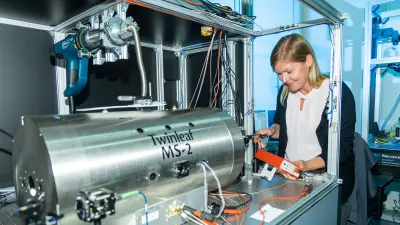
In light of all this, it is good to know that politicians have recognized the potential of quantum technology. The German government set aside two billion euros for it in its stimulus package, and just recently a panel of experts from research and industry presented a roadmap to quantum computing. This is an important step. But it should give us pause for thought that China intends to spend ten billion euros over the next few years on promoting quantum technology. We must not allow the result to be the same European paradox we have seen in other fields of technology: basic research is done in Europe, but all too frequently it is in other regions of the world that this is transformed into successful products. What is already telling is that the EU is ahead of China and the U.S. in terms of scientific publications about quantum technology, but way behind when it comes to patents.
In Europe collaboration is vital — among states, science and business
What can Europe do? Collaboration is vital — initially in the form of more intensive exchange between the member states’ research centers. And Germany should step up its collaboration with smaller countries such as Austria, the Netherlands, and Switzerland, which have already scored success in the field. But just as with other pioneering technologies, the overriding priority is an exchange between science and business: at an earlier stage and in greater depth than up to now.
One consequence of this should be greater incentives for researchers not merely to publish but also to actively seek out collaboration with the advance engineering departments of industrial enterprises. And not least, industry players will have to work together. The European quantum industry consortium set up at the beginning of February is a step in the right direction. It will be the job of industrial policy to provide support for this. In few other areas is such support as important as in quantum technology, which holds out the promise of disruptive market success on the one hand, but requires staying power on the other.
In the future, thoughts will control machines
From a longer-term perspective, at all events, Europe should be in the vanguard when quantum sensors can localize brain waves so precisely that they can be used not only in neurological diagnosis, but also in controlling electronic devices. In the more distant future, this technology will make interfaces between human brains and machines possible. No longer will pushing buttons and tapping screens or even giving voice commands be necessary. Instead, machines will immediately read people’s wishes. Even a century after Einstein, the effects of quantum physics can still astonish us, but the practical benefits of quantum technology will be even more astonishing.
First published in Handelsblatt on 2021/02/12
